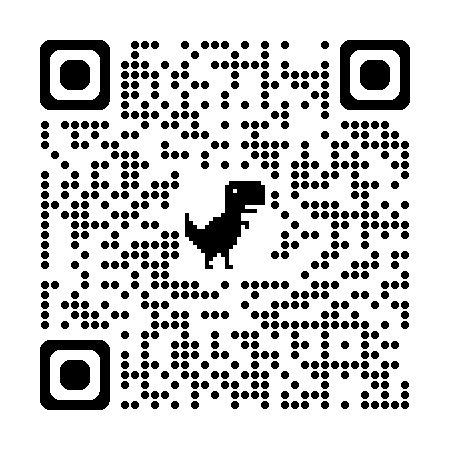COVID-19: Tele-Regulation of Broadcast Coverage of Public Health Emergencies in Nigeria
Keywords:
Corona virus Disease (COVID-19), Strategies, Engineering, Environmental, HealthAbstract
Background: Coronavirus disease (COVID-19) has presented a severe challenge to broadcasters globally. How broadcast media stations in Nigeria responded through their coverage is deserving of scholarly attention. How regulatory agencies performed their role during the out of the virus is equally worthy of scholarly attention.
Objective: This study assessed COVID-19 coverage by Kano State broadcast media. It also evaluated how the National Broadcasting Commission (NBC), an agency saddled with regulating the broadcasting industry, responded in tackling violations during a public health emergency. Methodology: The researchers made use of a mixed-method: content analysis and documentary analysis. Content analysis was used to generate quantitative data, while documentary analysis was used for qualitative data through analysis of the Weekly Monitory Reports (WMRs).
Results The paper found that the COVID-19 pandemic was given a third place on public station with 16% coverage and fourth position on a private station with about 15%. On information accuracy, the paper found that there were instances of inaccuracies about the virus as non-experts were severally featured on programmes, thus misleading the public.
Conclusion: The paper concludes that Kano broadcasters paid attention to the pandemic but disregarded professionalism in so many instances as inaccuracies and misinformation were reported and acted upon by NBC. It is therefore recommended that NBC should not only amend emergency coverage provisions in the Code but come up with a broadcast policy on disaster and other crises emergencies as an antidote to unprofessional coverage as witnessed in some stations.
Unique contribution: The study offered theoretical and practical contribution that explains how broadcasters report health emergency issues in radio stations.
Key recommendation: National broadcasting commission should come up with a broadcast policy on disaster and other crises emergencies as a remedy to unprofessional coverage as witnessed in broadcast stations.
References
Abdulqadir, U. A. (2016). Women and the utilization of reproductive healthcare services in the Sokoto metropolis. Bayero Journal of Social & Management Studies, 19(4), 295-310.
Abubakar, A. A., Odesanya, A. L., Adewoye, A. O., & Olorede, J. (2014). Patterns of cervical cancer coverage in selected Nigerian Magazines. Journal of Journalism & Society, 1 (2), 64 -74.
Azlan, E. M. a. A. A. (2020). COVID-19 and Communication Planning for Health Emergencies. Malaysian Journal of Communication, 1(2).
Baran, S., & Davis, D. (2011). Mass communication theory: Foundations, ferment, and future: Nelson Education.
Berry, T. R., Wharf-Higgins, J., & Naylor, P. (2007). SARS wars: an examination of the quantity and construction of health information in the news media. Health communication, 21(1), 35-44.
Brown, B., Crawford, P., & Carter, R. (2006). Evidence-based health communication: McGraw-Hill Education (UK).
Dahiru, J. M. (2016). Public health awareness and knowledge among almajiri in Kaduna, Nigeria. Bayero Journal of Social & Management Studies, 19(4), 285-294.
Lauer, S. A., Grantz, K. H., Bi, Q., Jones, F. K., Zheng, Q., Meredith, H. R., . . . Lessler, J. (2020). The incubation period of coronavirus disease 2019 (COVID-19) from publicly reported confirmed cases: estimation and application. Annals of internal medicine, 172(9), 577-582.
Malam, N. (2005). The Scope and Application ofDevelopment News’ by Nigerian Newspaper Journalists. Africa Broadcast Journal, 1(1).
Malumfashi, S. L. (2010). A Sociological study of public health issues in Kano, Nigeria. Bayero Journal of Social & Management Studies, 13(2), 58-74.
Mizumoto, K., & Chowell, G. (2020). March 2020, posting date. Estimating risk for death from 2019 novel coronavirus disease, China, January-February 2020. Emerg Infect Dis doi, 10.
Mohamad, E., & Azlan, A. A. (2020). COVID-19 and communication planning for health emergencies. Jurnal Komunikasi: Malaysian Journal of Communication, 36(1).
Natividad, I. (2020). COVID-19 and the media: The role of journalism in a global pandemic. Retrieved from https://news.berkeley.edu/2020/05/06/covid-19-and-the-media-the-role-of-journalism-in-a-global-pandemic/
Odeh, G. O. (2020). A Neglected Historio-Therapeutic Response to Covid-19 Pandemic: African Ebers Papyrus Revisited. International Scholar Journal of Arts and Social Science Research, 3(1), 33-43.
Ojebuyi, B. R., & Ogunkunle, D. O. (2019). Private radio stations fare better: Audience perception of adherence to social responsibilities by public and private radio stations in Oyo State, Nigeria. Global Journal of Human Social Science 19(5), 1-10.
Rabi'u, A. B. (2016). Press coverage of Ebola epidemic in Nigeria. M. Sc. Dissertation Department of Mass Communication. Bayero University, Kano.
Rabilu, A. (2017). Coverage of the Transformation Agenda of President Goodluck Jonathan in two Nigerian newspapers. Journal of Communication and Media Research, 9(1), 149-162.
Rabilu, A., & Abdullahi, A. M. (2019 ). The political economy of broadcast programming and influencing agencies in Nigeria. TSU Journal of Communication and Media Studies, 2(2), 91-109.
Salawu, A. (2019). Reeling nostalgia: 'A remote' and the enduring Sakara music in Nigeria. Journal of Global Mass Communication, 2(1), 108-123.
Sanda, H. U. (Ed.) (2017). Media preferences of pregnant women on antenatal health care services in Kano. In Issues in media history, communication and development in Nigeria ed. Umaru Pate, Balarabe Maikaba, Umar Jibril Gwandu. Zaria: ABU Press.
Downloads
Published
How to Cite
Issue
Section
License
Copyright (c) 2021 The authors

This work is licensed under a Creative Commons Attribution-NonCommercial-ShareAlike 4.0 International License.



